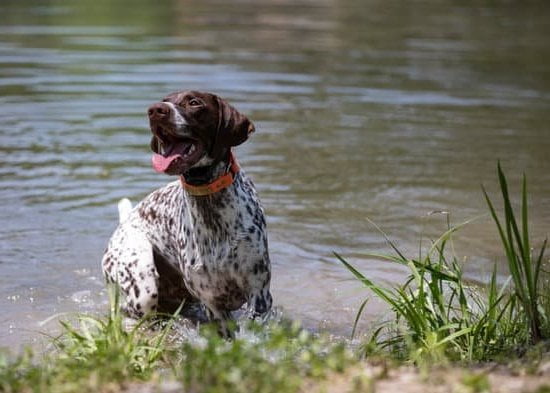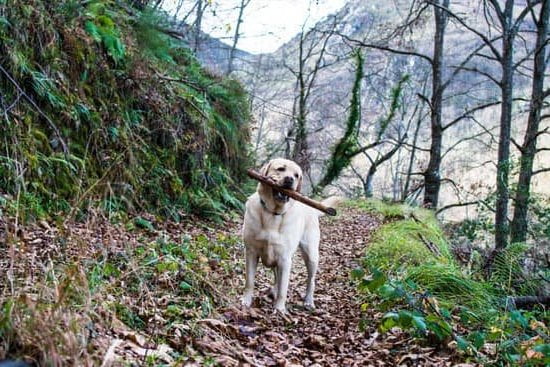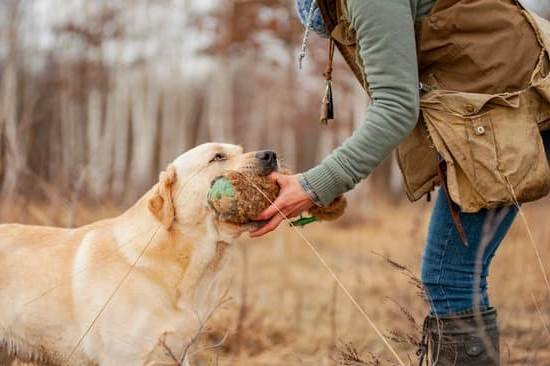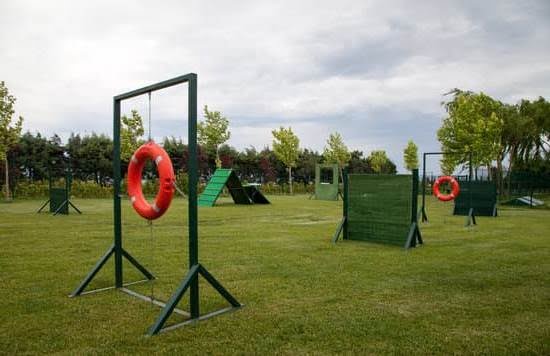Potty training is a crucial milestone in a dog’s development, and it plays a significant role in creating a harmonious living environment for both the pet and the owner. From preventing accidents indoors to fostering good bathroom habits, potty training brings numerous benefits. In this article, we will delve into the essentials of potty training for dogs, including when to start, effective training methods, and challenges to overcome along the way.
A well-potty trained dog not only ensures a clean and hygienic home but also promotes a stronger bond between the pet and their owner. By establishing clear expectations and routines from the start, both parties can enjoy a more peaceful coexistence. However, it’s essential to remember that potty training requires consistency, patience, and positive reinforcement.
The basics of potty training for dogs involve selecting an appropriate method and following key steps that focus on teaching them where their designated elimination areas are. It is during these early stages that puppy owners have an opportunity to introduce their new furry family member to their routines. Additionally, understanding a dog’s developmental stages plays a vital role in adapting training techniques accordingly.
As we explore further into this article, we will tackle various aspects of potty training dogs, such as breed influence, common challenges faced by owners along the journey, tips for accelerating progress, signs of successful potty training, and why responsible ownership is paramount. So if you’re ready to embark on the journey of successful potty training with your beloved canine companion or seeking solutions to obstacles you may encounter along the way – read on.
The Basics of Potty Training
Potty training is an essential part of raising a dog and creating a harmonious living environment for both the pet and the owner. When it comes to where to start with potty training, there are several key factors to consider. Selecting an appropriate potty training method, establishing consistency, patience, and positive reinforcement, and setting clear expectations are all crucial steps in the process.
Selecting an Appropriate Potty Training Method
There are various methods available for potty training dogs, including crate training, paper training, and outdoor training. It’s important to choose a method that suits your lifestyle and preferences as well as your dog’s needs. Some methods may work better for certain breeds or sizes of dogs.
Consistency, Patience, and Positive Reinforcement
Consistency is key when it comes to potty training your dog. Establishing a routine is important so that your dog understands when and where they should eliminate. Patience is also necessary during this process as accidents may happen along the way. Positive reinforcement plays a vital role in encouraging desired behavior. Praising or rewarding your dog when they eliminate in the designated area will reinforce their understanding of what is expected.
Setting Clear Expectations
Clearly communicating your expectations to your dog is essential for successful potty training. Use verbal cues or commands consistently while taking them outside or showing them where the designated area is indoors. Additionally, establish a feeding schedule for your dog, as this will help regulate their bathroom habits.
By following these basic guidelines for potty training dogs, you can set the foundation for successful housebreaking. Remember that each dog is unique and may progress at their own pace. Stay patient, consistent, and positive throughout the process to create good habits that will benefit both you and your furry friend.
Puppy Potty Training
Puppy potty training is an essential part of the early stages of a dog’s life. Early introduction to potty training sets a solid foundation for a well-behaved and house-trained adult dog. It is crucial to start potty training puppies at the right age, typically around 8 weeks old, as this is when they begin to develop bladder control.
Introducing Designated Elimination Areas
When starting puppy potty training, it’s important to introduce designated elimination areas in your home or outdoor space. This can be done by using puppy pads, newspaper, or taking them outside to a specific spot. Consistency is key during this stage – make sure to always take your puppy to the same area so they associate it with eliminating waste.
Using crate training can also be highly beneficial in puppy potty training. Dogs have an innate instinct not to soil their sleeping area, so utilizing a crate can help teach them bladder and bowel control. Make sure the crate is appropriately sized for your puppy – it should be big enough for them to stand up, turn around, and lie down comfortably but not too spacious that they could create a separate space for elimination.
Frequent Bathroom Breaks and Supervision
Puppies have smaller bladders than adult dogs and need more frequent bathroom breaks. As a general guideline, take your puppy outside immediately after waking up, after meals or water intake, after playtime or vigorous activities, and right before bedtime. Remember that supervision plays a critical role in successful potty training during this stage. Keep an eye on your puppy at all times and learn to recognize signs that indicate they need to eliminate such as circling or sniffing around.
It’s important to note that accidents will happen during the early stages of puppy potty training. It’s essential not to punish or scold your pup for accidents as this can cause fear and anxiety. Instead, calmly clean up the mess and continue with the training process. With consistency, patience, and positive reinforcement, your puppy will become fully potty trained and develop good bathroom habits.
Understanding the Developmental Stages in Dogs
One crucial aspect of successful potty training in dogs is understanding their developmental stages. Dogs go through various milestones as they grow, and these stages can impact their ability to be fully potty trained. By recognizing and adapting training techniques to suit each stage, owners can ensure a smoother and more effective potty training process.
During the early weeks of a puppy’s life, it is essential to understand that their bladder and bowel control are not fully developed. The ideal age to start potty training puppies is between 12 and 16 weeks old as this is when they have better physical control over elimination.
Introducing puppies to designated elimination areas, such as a spot in the yard or specific pee pads indoors, helps them develop preferences for where to go. Additionally, crate training can be beneficial during this stage as it teaches puppies to hold their bladder for longer periods and reinforces the concept of a designated elimination area.
As puppies grow older, they will naturally require fewer bathroom breaks throughout the day. However, it is crucial to maintain consistent supervision during this stage to prevent accidents and reinforce good habits.
Paying attention to signs that indicate a dog needs to go outside, such as restlessness or circling, can help owners anticipate their needs better. It may also be helpful to establish a consistent schedule for bathroom breaks until the dog becomes reliable in signaling when they need to go.
Adolescence is another critical developmental stage that can impact potty training progress. Just like human teenagers, adolescent dogs may experience a regression in behaviors they previously had down pat. This regression could lead to accidents or resistance towards following established routines. Understanding that this is often temporary allows owners to remain patient and consistent during this challenging period.
In summary, recognizing the different developmental stages in dogs and how they affect potty training is essential for successful housebreaking efforts. Modifying training techniques according to each stage allows owners to understand their dog’s needs better and adapt their approach to suit them. By being patient, consistent, and observant throughout the entire developmental process, owners can ensure a smoother transition to full potty training and create a harmonious living environment for both themselves and their beloved pets.
| Developmental Stage | Potty Training Considerations |
|---|---|
| Early Weeks (8-12 weeks) | – Bladder and bowel control not fully developed.
|
| Puppies (12-16 weeks) | – Improved physical control over elimination.
|
| Adolescence (4 to 12 months) | – Possible regression in potty training progress.
|
The Role of Breed and Size in Potty Training
Potty training is an essential aspect of raising a dog, but it is important to recognize that the timeline for potty training can vary based on the breed and size of the dog. Different breeds may have different temperaments and physical capabilities, which can affect their ability to understand and follow potty training instructions. Additionally, the size of the dog can impact their bladder capacity and their need to eliminate more frequently.
Certain breeds may require extra attention and effort during the potty training process. For example, smaller toy breeds often have smaller bladders, which means they may need to go outside more frequently than larger breeds. Terrier breeds are known to be stubborn at times, so their training might take longer compared to other breeds. On the other hand, some larger or working dog breeds are quick learners and may catch onto potty training faster.
To adapt your potty training strategy based on breed and size:
- Understand your specific breed’s needs: Do some research on your dog’s breed and learn about its typical temperament, behavior patterns, and any particular challenges that may arise during potty training.
- Be patient and consistent: Regardless of breed or size, all dogs benefit from consistency in training. Establish a routine that is conducive to your dog’s needs and stick with it. Consistent reinforcement will help dogs understand expectations better.
- Modify strategies as needed: If you find that your current potty training approach isn’t yielding results for your specific breed or size of dog, be willing to adjust your methods. For example, toy breeds might require more frequent bathroom breaks throughout the day due to their smaller bladders.
- Utilize appropriate equipment: Depending on your dog’s size and breed, you may need different equipment or tools for effective potty training. For example, if you have a small breed puppy, consider using small-sized pee pads or litter boxes initially, while larger breeds may require access to a fenced yard.
By considering the role of breed and size in potty training, dog owners can tailor their training strategies to meet the individual needs of their canine companions. Understanding these factors can help set realistic expectations and ensure a successful potty training journey. Remember, regardless of breed or size, consistency, patience, and positive reinforcement are key elements in achieving potty training success.
| Breed | Potty Training Timelines |
|---|---|
| Toy Breeds (e.g., Chihuahua, Yorkie) | Potty training may take longer due to smaller bladder capacity. More frequent bathroom breaks might be necessary. |
| Working Breeds (e.g., Labrador Retriever, German Shepherd) | These breeds are generally quick learners and may catch onto potty training faster. |
| Terrrier Breeds (e.g., Jack Russell Terrier, Yorkshire Terrier) | Terriers can be stubborn at times, so potty training might require more patience and persistence. |
Common Challenges in Potty Training
Potty training can sometimes present challenges for dog owners, but with patience and persistence, these hurdles can be overcome. One common challenge that dog owners may face is accidents in the house. It is important to remember that accidents are a normal part of the potty training process, especially during the early stages. Instead of punishing the dog for accidents, it is crucial to remain calm and focus on positive reinforcement.
To address accidents, it is helpful to establish a consistent routine and keep a close eye on the dog’s behavior. Take note of any signs that indicate the dog needs to go outside, such as sniffing around or circling. When you notice these signs, quickly take them outside to their designated elimination area. If an accident does occur inside, it is important not to scold or punish the dog as this can create fear and anxiety around potty training.
Another challenge that may arise during potty training is regression. Dogs may have moments where they revert back to having accidents after showing progress. This can happen due to various reasons such as changes in routine, stress, or health issues. In such cases, it is important not to get discouraged or blame the dog. Instead, evaluate any recent changes that may have triggered the regression and try to address them accordingly.
Stubbornness can also be a challenge during potty training. Some dogs may resist going outside or have difficulty understanding where they should eliminate. In these situations, it is essential to maintain consistency and provide ample opportunities for success through frequent bathroom breaks and supervised outings. Consider using positive reinforcement techniques such as treats or praise when the dog successfully goes outside. This will help motivate them and reinforce good bathroom habits.
By addressing these common challenges with patience and appropriate strategies, successful potty training can be achieved. It is important for dog owners to stay committed throughout the process and understand that every dog learns at their own pace. With time and effort invested into potty training, not only will the dog have a well-established routine, but owners will also experience the convenience and joy of having a fully potty trained dog in their home.
Tips for Accelerating Potty Training Progress
When it comes to potty training your dog, it can sometimes feel like a challenging and time-consuming process. Fortunately, there are certain tips and techniques you can implement to accelerate the potty training progress and help your furry friend become fully trained more quickly. Here are some effective strategies that you can try:
- Consistency is Key: One of the most important factors in accelerating potty training progress is consistency. Establish a routine by taking your dog out to their designated elimination area at regular intervals throughout the day. This will help them develop good bathroom habits and understand where they should go to relieve themselves.
- Use Positive Reinforcement: Positive reinforcement is a powerful tool in promoting desired behavior during potty training. Whenever your dog successfully uses the appropriate area for elimination, praise and reward them with treats or verbal affirmations. This will reinforce the positive association with going in the right place and motivate them to repeat that behavior.
- Set Realistic Expectations: It’s essential to have realistic expectations when it comes to potty training progress. Remember that every dog is unique, and some may grasp the concept quicker than others. Stay patient, consistent, and understanding throughout the process, as accidents may happen along the way.
- Crate Training: Crate training can be an effective method for potty training dogs, especially during the early stages. Dogs have a natural instinct not to soil their sleep area, so using a crate can help teach them bladder control and encourage them to hold their pee or poop until they are taken outside.
- Supervise Properly: During the potty training process, it’s crucial to supervise your dog closely, especially when they are out of their crate or designated elimination area. Keeping an eye on them will allow you to recognize any signs that indicate they need to go outside, such as restlessness, sniffing around, or circling.
Incorporating these tips into your potty training routine can help accelerate the progress and make the process more efficient. Remember to be patient, consistent, and understanding with your furry friend as they learn this important life skill. With time and proper training, your dog will become fully potty trained and enjoy a harmonious living environment with you.
Signs of Successful Potty Training
Potty training can be a challenging process, but there are clear signs that indicate when a dog has achieved successful potty training. These signs not only demonstrate that the dog has learned proper bathroom habits but also indicate that the owner has effectively communicated their expectations and created a harmonious living environment. Here are some key signs to look out for:
- Consistent use of designated elimination area: A fully potty trained dog will consistently use the designated bathroom spot, whether it is outdoors or on a designated indoor pad. This shows that the dog understands where they are supposed to go and has developed good bathroom habits.
- No accidents in the house: One of the most evident signs of successful potty training is the absence of accidents indoors. If your dog consistently goes outside or uses their designated indoor spot without any accidents inside, it indicates that they have learned to hold their bladder and communicate their needs effectively.
- Indicating need to go outside: A potty trained dog will show clear indicators when they need to go outside, such as scratching at the door, whining, pacing, or going to their designated bathroom area and waiting patiently. If your dog consistently communicates their need to go outside without any confusion or accidents inside, it demonstrates successful potty training.
It is important to note that achieving full potty training may take time and consistency. The timeline can vary depending on factors such as breed, size, age, and individual learning ability. On average, it can take several weeks to a few months for dogs to become fully potty trained. However, every dog is unique, so it is crucial to be patient and consistent throughout the process.
While successfully potty training your dog is a significant milestone, it is important to continue reinforcing and maintaining good potty habits. Dogs can sometimes have accidents due to factors such as illness, stress, or changes in their routine or environment. Ongoing reinforcement through positive reinforcement, consistency, and regular bathroom breaks will help ensure that your dog continues to practice proper bathroom habits and maintain a clean living environment for both you and your four-legged companion.
Conclusion
In conclusion, the potty training journey is an essential aspect of responsible dog ownership. By committing to the proper techniques and strategies outlined in this article, dog owners can set their furry friends up for success and create a harmonious living environment. It is crucial to remember that potty training takes time, patience, consistency, and positive reinforcement.
Throughout this article, we have highlighted the importance of establishing a routine, recognizing developmental milestones, adapting training techniques based on breed and size, troubleshooting common challenges, and accelerating progress through additional tips and techniques. By following these guidelines, dog owners can navigate the potty training process with confidence.
It is also important to remember that achieving full potty training does not signify the end of responsibility. Ongoing reinforcement and maintenance of good potty habits are necessary to ensure long-term success. Celebrate each milestone achieved by your furry friend and continue to provide support and encouragement.
By staying committed to potty training and practicing responsible ownership, you not only create a hygienic home environment but also foster a strong bond with your pet. So be patient, stay consistent, celebrate successes along the way, and enjoy the many benefits that come with having a fully potty trained dog.
Frequently Asked Questions
What’s the hardest dog to potty train?
The hardest dog breed to potty train can vary, as factors such as individual temperament, age, and background play a significant role. However, certain breeds are commonly regarded as more challenging in this aspect. For example, small toy breeds like Chihuahuas or Yorkshire Terriers are often considered difficult due to their small bladders and stubbornness.
Similarly, some hound breeds may pose challenges due to their strong scenting instincts and tendency to be easily distracted outdoors. Additionally, dogs from puppy mill or rescue backgrounds might require extra patience and consistency since they may not have received proper training early on.
Do all dogs eventually get potty trained?
While it is usually possible for all dogs to eventually become potty trained with consistent effort and appropriate training methods, there can be exceptions. Dogs with underlying medical conditions that affect their bladder control may struggle more and require additional veterinary care.
Similarly, elderly dogs or those with neurological issues might face difficulties in maintaining consistent house-training habits. In such cases, working closely with a veterinarian or professional dog trainer can help develop strategies tailored to the specific needs of the dog.
How many times should I take my dog out to potty?
The frequency at which you should take your dog out to potty depends on multiple factors including its age, size, health condition, and routine. Generally speaking, puppies have smaller bladders and younger dogs have less control over their bodily functions compared to adult dogs. As a general guideline for puppies or newly adopted adult dogs, it is recommended to take them outside every 1-2 hours during the initial stages of potty training.
Gradually increase the time interval based on their progress until they can hold it for longer periods. Providing regular opportunities after meals, naps, play sessions, or waking up is also important in establishing a consistent routine while ensuring they don’t have accidents indoors. Remember that every dog is unique and adapting the frequency based on your specific pet’s needs will contribute towards successful house training efforts.

Welcome to the blog! I am a professional dog trainer and have been working with dogs for many years. In this blog, I will be discussing various topics related to dog training, including tips, tricks, and advice. I hope you find this information helpful and informative. Thanks for reading!





